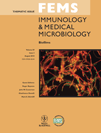Microbial diversity in biofilm infections of the urinary tract with the use of sonication techniques
Editor: John Costerton
Abstract
Infections of the urinary tract account for >40% of nosocomial infections; most of these are infections in catheterized patients. Bacterial colonization of the urinary tract and catheters causes not only the particular infection but also a number of complications, for example blockage of catheters with crystallic deposits of bacterial origin, generation of gravels and pyelonephritis. Infections of urinary catheters are only rarely single-species infections. The longer a patient is catheterized, the higher the diversity of biofilm microbial communities. The aims of this study were to investigate the microbial diversity on the catheters and to compare the ability to form biofilm among isolated microbial species. The next aim was to discriminate particular causative agents of infections of the urinary tract and their importance as biofilm formers in the microbial community on the urinary catheter. We examined catheters from 535 patients and isolated 1555 strains of microorganisms. Most of the catheters were infected by three or more microorganisms; only 12.5% showed monomicrobial infection. Among the microorganisms isolated from the urinary catheters, there were significant differences in biofilm-forming ability, and we therefore conclude that some microbial species have greater potential to cause a biofilm-based infection, whereas others can be only passive members of the biofilm community.




